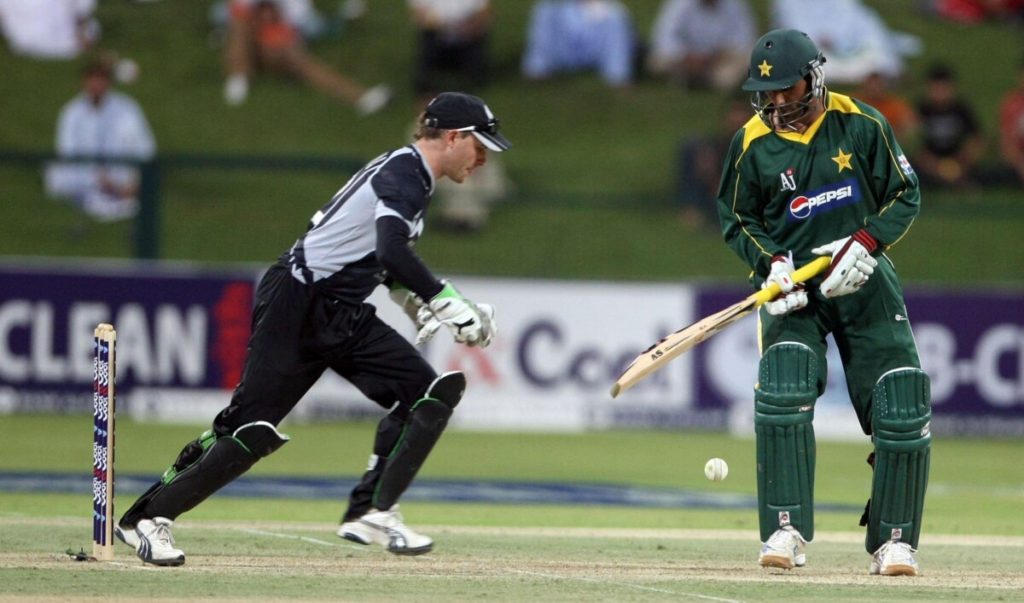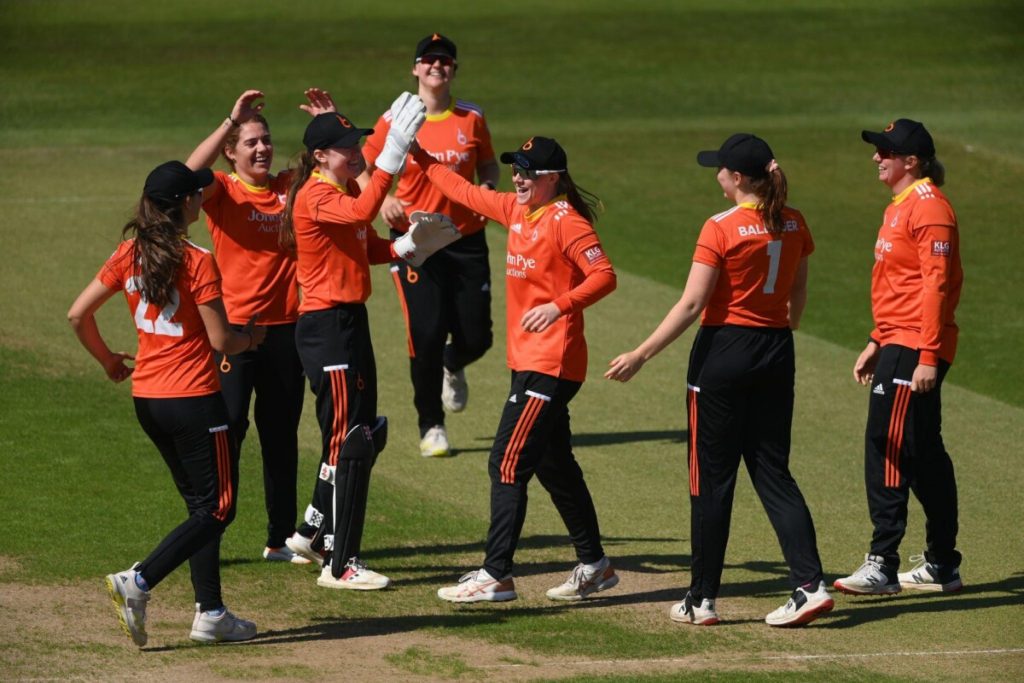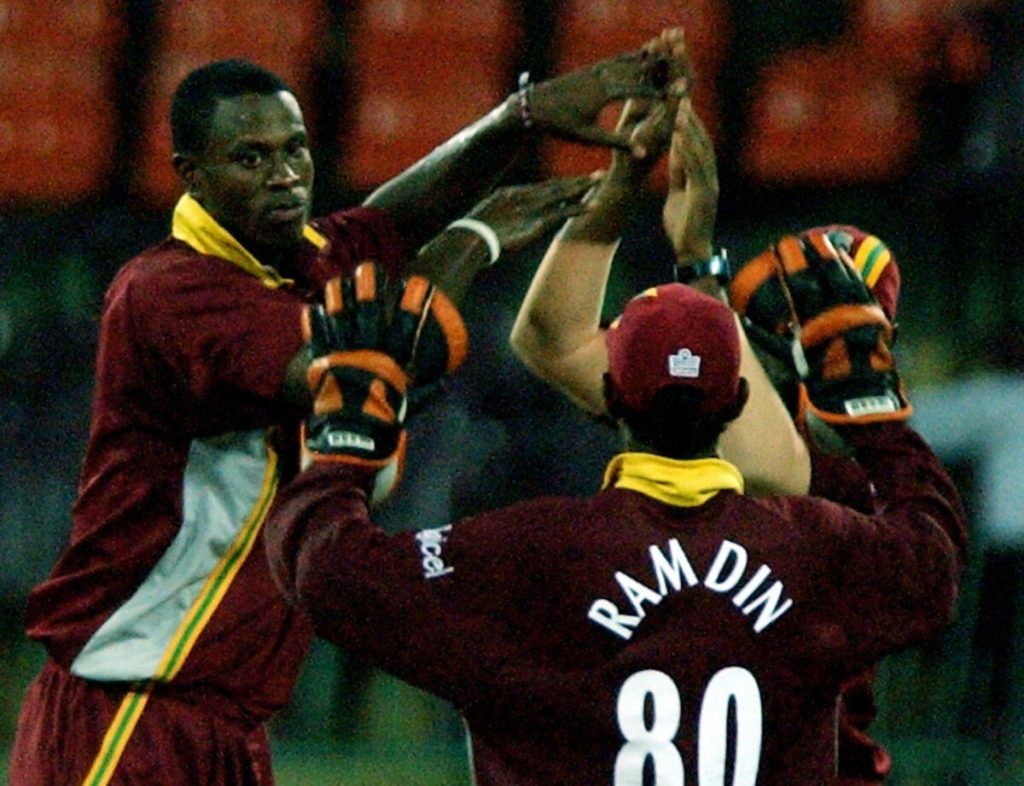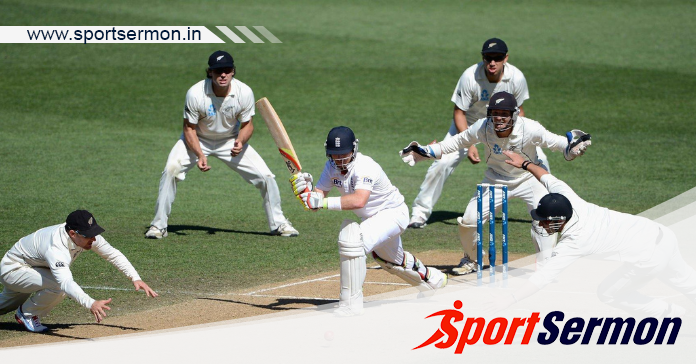The fielding restrictions that we now know as the powerplay was introduced in ODI cricket in 1980 in Australia. The most common rule was for only two fielders to be allowed outside the circle in the first fifteen overs, then five fielders allowed outside the circle for the remaining overs.
The term powerplay was introduced by the International Cricket Council (ICC) in 2005, when the fielding restrictions were split into 3 blocks: the mandatory ten overs at the start of the innings and two further five-over powerplays with the bowling team being able to choose the timing of both.
In T20 cricket, the powerplay is even more restrictive, with only two fielders allowed outside the 30-yard circle for the first six overs. This is done to ensure that the game is more exciting and batsman-friendly, as it gives them more opportunities to score runs.
What is Powerplay in Cricket?

Powerplay in cricket is a set of fielding restrictions that are enforced on the fielding team during the first 10 overs of an innings in One Day International (ODI) cricket. These restrictions limit the number of fielders that can be placed outside the 30-yard circle, which gives the batting team an opportunity to score more runs.
The powerplay is divided into two phases:
The first powerplay: The first 10 overs of the innings, a maximum of two fielders are allowed outside the 30-yard circle.
The second powerplay: Between overs 11 and 40, a maximum of four fielders are allowed outside the 30-yard circle.
In the final 10 overs of the innings, there are no fielding restrictions.
The powerplay was introduced in ODI cricket in 2005 as a way to make the game more exciting and to give the batting team a better chance of scoring runs. It has been successful in achieving these goals, and ODI cricket has become one of the most popular forms of cricket in the world.
When Was Powerplay Introduced in Cricket?
The powerplay was introduced in cricket in 2005 as a way to make the game more exciting and to give the batting team a better chance of scoring runs. Here are some of the reasons behind the introduction of the powerplay:
To make the game more exciting for spectators: In the early days of ODI cricket, the matches were often very low-scoring, with the average score being around 200 runs. This made the matches quite boring for spectators, as there were not many opportunities for big scores. The powerplay was introduced to make the matches more exciting by giving the batting team a chance to score more runs in the early overs.
To give the batting team a better chance of winning: In the early days of ODI cricket, the bowling team had a significant advantage, as they could place fielders all around the boundary. This made it very difficult for the batting team to score runs, and as a result, the bowling team often won the match. The powerplay was introduced to give the batting team a better chance of winning by limiting the number of fielders that could be placed outside the 30-yard circle.
To make the game more challenging for the bowling team: In the early days of ODI cricket, the bowling team did not have to be very accurate with their deliveries, as they could rely on the fielders to stop the batsmen from scoring runs. The powerplay was introduced to make the game more challenging for the bowling team by limiting the number of fielders that could be placed outside the 30-yard circle. This forced the bowlers to be more accurate with their deliveries, and as a result, the matches became more exciting.
What is T20 Powerplay in cricket?

In T20 cricket, the powerplay is a set of overs in which the fielding team is restricted in the number of fielders they can place outside the 30-yard circle. This gives the batting team an opportunity to score more runs in the early overs.
The powerplay in T20 cricket is as follows:
The first six overs of the innings: A maximum of two fielders are allowed outside the 30-yard circle.
Overs 7 to 20: A maximum of five fielders are allowed outside the 30-yard circle.
In the final four overs of the innings, there are no fielding restrictions.
The powerplay is a critical part of T20 cricket, as it can give the batting team a significant advantage. In the first six overs, the batting team can often score at a run rate of over 10 runs per over, which can put the bowling team under a lot of pressure.
However, we have seen that powerplay in T20 cricket can work in advantage of fielding side. A close-up fielding position often puts pressure on the batting side. If restricted from scoring opportunity, batters often attempt reckless shots which leads to wicket taking opportunities.
Here are some of the benefits of the powerplay in T20 cricket:
- It makes the game more exciting for spectators, as there are more opportunities for big scores.
- It gives the batting team a better chance of winning the match, as they can score more runs in the early overs.
- It makes the game more challenging for the bowling team, as they have to be more accurate with their deliveries.
Here are some of the drawbacks of the powerplay in T20 cricket:
- It can make the game too one-sided, as the batting team can often score a lot of runs in the powerplay overs.
- It can make the game less tactical, as the batting team can often just hit the ball out of the park in the powerplay overs.
Which was the first match played according to powerplay rules?

The first match played according to powerplay was the third ODI between West Indies and Sri Lanka in Port of Spain, Trinidad on 13 May 2005. The West Indies won the match by 5 wickets.
The powerplay was introduced in ODI cricket in 2005 as a way to make the game more exciting and to give the batting team a better chance of scoring runs. The first match played according to powerplay was a historic moment in the history of cricket, as it marked the beginning of a new era in the game.
What were the fielding restrictions before powerplay was introduced to cricket?
Before the introduction of the powerplay in 2005, there were no fielding restrictions in ODI cricket. This meant that the fielding team could place fielders anywhere on the field, which gave them a significant advantage over the batting team.
In 1980, fielding restrictions were introduced in the Australian domestic cricket competition. These restrictions limited the number of fielders that could be placed outside the 30-yard circle in the first 15 overs of an innings. This was done to make the game more exciting and to give the batting team a better chance of scoring runs.
The fielding restrictions in ODI cricket were eventually codified by the International Cricket Council (ICC) in 1992. The ICC rules stipulated that only two fielders could be placed outside the 30-yard circle in the first 15 overs of an innings. This rule remained in place until the introduction of the powerplay in 2005.
The introduction of the powerplay was a major change in the rules of ODI cricket. It gave the batting team a significant advantage in the early overs, which made the game more exciting for spectators. However, the powerplay has also been criticized for making the game too one-sided, as the batting team can often score a lot of runs in the powerplay overs.
The fielding restrictions in ODI cricket have continued to evolve since the introduction of the powerplay. In 2015, the ICC changed the rules so that the batting team could choose when to take the powerplay. This change was made to give the batting team more flexibility and to make the game more strategic.
The fielding restrictions in ODI cricket are constantly being reviewed by the ICC. As the game evolves, the ICC will need to make sure that the fielding restrictions are fair and that they do not make the game too one-sided.

